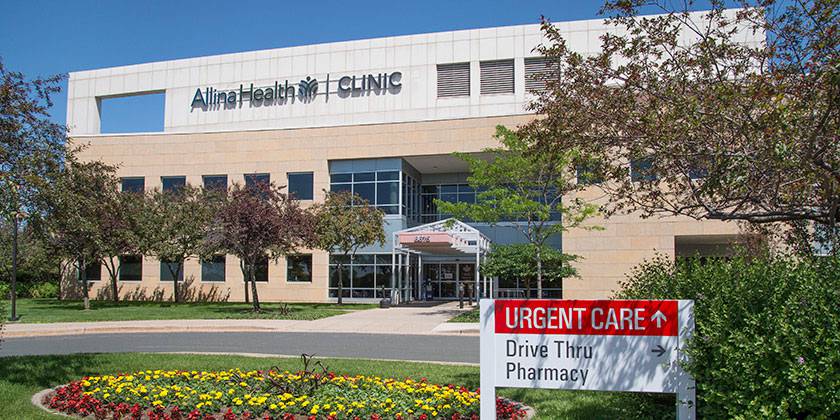Comprehending the Function of Urgent Care in Providing Timely Treatment for Non-Life-Threatening Conditions
Urgent care facilities have arised as an essential element of the medical care landscape, attending to the instant needs of patients with non-life-threatening problems. Recognizing the subtleties of immediate treatment might significantly influence individual outcomes and the total efficiency of health care delivery.
What Is Urgent Care?
Urgent treatment refers to a classification of clinical solutions made to resolve non-life-threatening conditions that require immediate interest. These facilities offer as an intermediary in between primary care doctors and emergency situation areas, supplying a convenient alternative for clients who require timely treatment without the comprehensive waiting times usually connected with emergency departments.
Immediate treatment facilities are typically staffed by doctor, consisting of physicians, registered nurse professionals, and physician assistants, that are educated to identify and treat a wide range of problems. Common solutions offered by these facilities consist of therapy for minor injuries, diseases, and infections, as well as diagnostic tests such as X-rays and laboratory work.
Furthermore, urgent care facilities commonly approve walk-in people, getting rid of the demand for appointments. On the whole, immediate care plays an important role in the health care system, making sure clients can access important clinical services quickly and efficiently.

When to look for treatment at an urgent care facility instead of a key care doctor or an emergency situation area,Lots of individuals might discover themselves uncertain regarding. Immediate treatment is developed to deal with non-life-threatening conditions that require timely focus however are not serious enough to necessitate an emergency situation space go to.
Typically, one need to think about immediate look after problems such as small cracks, sprains, cuts needing stitches, or infections like urinary system tract infections. In addition, cold or influenza symptoms, breakouts, and allergic responses can likewise be appropriately managed in this setup.
It is necessary to note that immediate treatment is not appropriate for deadly emergency situations, such as breast pain, difficulty breathing, or extreme blood loss, which necessitate instant emergency room treatment.
People who lack access to a key care physician or can not safeguard a prompt visit might also take advantage of urgent treatment services. Eventually, understanding when to make use of urgent care can result in extra efficient medical care distribution, allowing individuals to receive the ideal level of care based upon their certain health demands.
Advantages of Urgent Treatment Centers
Selecting urgent treatment centers for non-life-threatening conditions uses several advantages that improve patient experience and access. One main benefit is the reduced wait times contrasted to traditional emergency situation areas. Immediate treatment centers normally operate a first-come, first-served basis, allowing clients to receive prompt clinical attention without the lengthy delays commonly related to healthcare facility setups.
Additionally, immediate care facilities provide prolonged hours, consisting of weekends and evenings, accommodating clients with varying schedules. This adaptability ensures that people can look for care when it is most convenient for them, further advertising timely intervention.

Furthermore, these centers frequently offer a thorough variety of services, including diagnostic tests and minor procedures, all under one roofing system. This consolidation of services not only enhances the client experience but also fosters a much more natural technique to taking care of non-life-threatening health problems, inevitably profiting overall person end results.
Common Conditions Treated
At urgent care centers, a selection of non-life-threatening problems can be efficiently treated, supplying individuals with easily accessible and timely clinical assistance. These facilities are specifically adept at addressing concerns that call for timely interest however do not present an immediate danger to life or limb.
Common conditions treated at immediate care facilities consist of minor injuries such as strains, cracks, and strains. Urgent care facilities are geared up to do necessary diagnostic tests, such as X-rays and laboratory tests, allowing them to offer comprehensive treatment.
In addition, immediate care service providers can provide inoculations, helping to protect against the spread of infectious conditions - Urgent Care. They additionally offer services for minor treatments, such as suturing injuries or draining abscesses. By using these diverse solutions, urgent treatment anonymous facilities play an important duty in connecting the gap between medical care and emergency situation services, ensuring patients receive prompt treatment for a broad variety of problems without the demand for lengthy delay times usually connected with emergency clinic
How Urgent Care Sustains Medical Care System
Urgent care centers play an important function in sustaining the overall medical care system by relieving the concern on emergency departments and providing prompt accessibility to medical treatment for non-life-threatening problems. By handling instances such as minor injuries, infections, and ailments, urgent care facilities allow emergency situation divisions to concentrate on more essential patients requiring immediate attention.
In addition, urgent care facilities boost medical care accessibility, using extensive hours and an extra practical alternative to conventional medical care setups. This access is particularly useful for clients that might not have a routine medical professional or who need prompt treatment beyond regular office hours. As a result, urgent care facilities successfully decrease wait times and boost person fulfillment.
Furthermore, urgent treatment facilities add to set you Extra resources back financial savings for both people and the health care system by supplying lower-cost services contrasted to emergency situation departments. This monetary performance is essential in an link era of rising healthcare costs, permitting individuals to obtain necessary care without sustaining expensive expenses.
Verdict
Finally, immediate treatment facilities play an essential duty in the healthcare system by providing punctual therapy for non-life-threatening problems. By connecting the void in between medical care and emergency clinic, these facilities guarantee that individuals get timely medical interest without the lengthy delay times usually associated with emergency situation divisions. The access and effectiveness of urgent care centers add considerably to minimizing the total concern on health care resources, enhancing patient outcomes, and advertising a much more reliable health care shipment system.
Urgent treatment centers have emerged as an important element of the healthcare landscape, attending to the instant demands of people with non-life-threatening problems. Immediate care gos to usually incur reduced out-of-pocket costs contrasted to emergency situation division visits, making care more inexpensive for clients without compromising quality. Urgent care centers are furnished to execute needed analysis examinations, such as X-rays and laboratory examinations, enabling them to supply thorough care.
By supplying these diverse solutions, immediate care facilities play an important role in linking the gap between key treatment and emergency solutions, making certain clients obtain timely treatment for a wide variety of conditions without the demand for long delay times generally connected with emergency situation rooms.
In addition, immediate treatment facilities enhance health care access, offering extended hours and a much more hassle-free option to conventional main treatment settings.